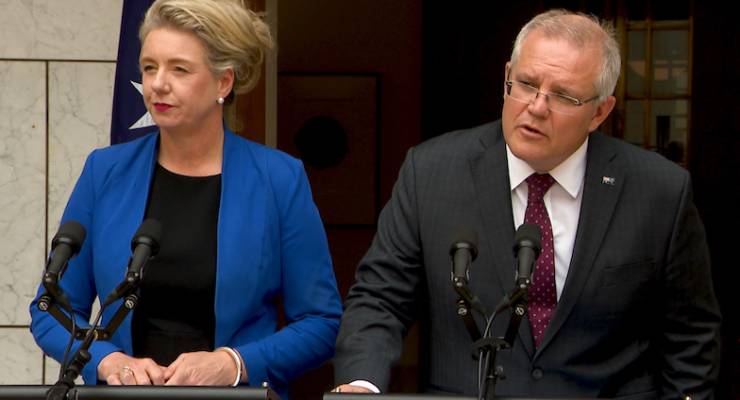
In its dissection of how Nationals minister Bridget McKenzie and her office essentially directed funds from the Community Sport Infrastructure Program to the Coalition’s re-election strategy, the Australian National Audit Office (ANAO) has crunched the numbers from every possible angle.
It is authoritative in its assessment that “the award of funding reflected the approach documented by the minister’s office of focusing on ‘marginal’ electorates held by the Coalition as well as those electorates held by other parties or independent members that were to be ‘targeted’ by the Coalition at the 2019 election”.
It also lays out the maths to prove it.
Government grants programs, typically, come with guidelines that tell applicants — and taxpayers — not just what to apply for and when (although the deadline requirement was overridden by McKenzie’s office) but the criteria against which they’ll be judged to ensure taxpayers get value for money.
One of the ways the ANAO is able to show how blatantly McKenzie’s office rorted the program for partisan purposes is by using the Australian Sports Commission’s independent assessment of the applications using the criteria identified in its guidelines — an assessment that McKenzie’s office specifically blocked the commission from sending to it.
Comparing the commission’s assessment to what McKenzie approved for funding provides a stark contrast, which the ANAO renders in graphical form:

Projects that were independently assessed at 90 or above out of a maximum 100 score by the commission were overlooked in favour of programs that ranked below 60, even below 50. One project (the ANAO doesn’t identify individual grants) that only scored 40, and which had been submitted after the closing date, but which McKenzie’s office demanded be included, was funded ahead of dozens of projects that scored more than twice that.
And it got worse as McKenzie’s office became bolder in their rorting. As the rounds went by, the “projects funded versus projects assessed” graph shifted to the left on the scale of quality assessment. By round three, scores of applications assessed above 70 were routinely ignored in favour of projects below 50.

McKenzie’s staff tried to defend themselves to the ANAO by offering a breakdown of funding by electorates that showed Labor electorates did comparatively well. But this ignores that they were targeting marginal Labor electorates, which along with marginal Coalition and independent-held electorates (like Rebekha Sharkie’s Mayo, where the whole rort came to light) did much better than others.
The ANAO rips the argument to shreds, noting:
There were 417 applications that were approved for funding with assessment scores below the threshold that would have applied if decisions had reflected the assessed merit of the competing eligible applications. The significant majority of these applications (71% of the number of applications and 74% of the funding) were in Coalition electorates or ‘targeted’ electorates.
The emphasis on seats targeted by the Coalition election campaign meant that safe Coalition seats also missed out. “Projects located in Safe and Fairly Safe Coalition-held electorates received 14% less funding than if funding had been awarded on the basis of assessed merit,” the ANAO explains.
In contrast, “‘target’ projects that were located in electorates held by the Australian Labor Party received a similar amount to what they would have received had funding been awarded on the basis of assessed merit”.
Even so, it looks as though partisan rancour still drove McKenzie’s staff: “nine of the ten electorates that received the least funding were held by Labor”.
Figures, graphs, comparisons, breakdowns — the ANAO shows with mathematical certainty how a minister and a pack of political staffers abused $100 million in taxpayer funds to get themselves re-elected.








Crikey is committed to hosting lively discussions. Help us keep the conversation useful, interesting and welcoming. We aim to publish comments quickly in the interest of promoting robust conversation, but we’re a small team and we deploy filters to protect against legal risk. Occasionally your comment may be held up while we review, but we’re working as fast as we can to keep the conversation rolling.
The Crikey comment section is members-only content. Please subscribe to leave a comment.
The Crikey comment section is members-only content. Please login to leave a comment.